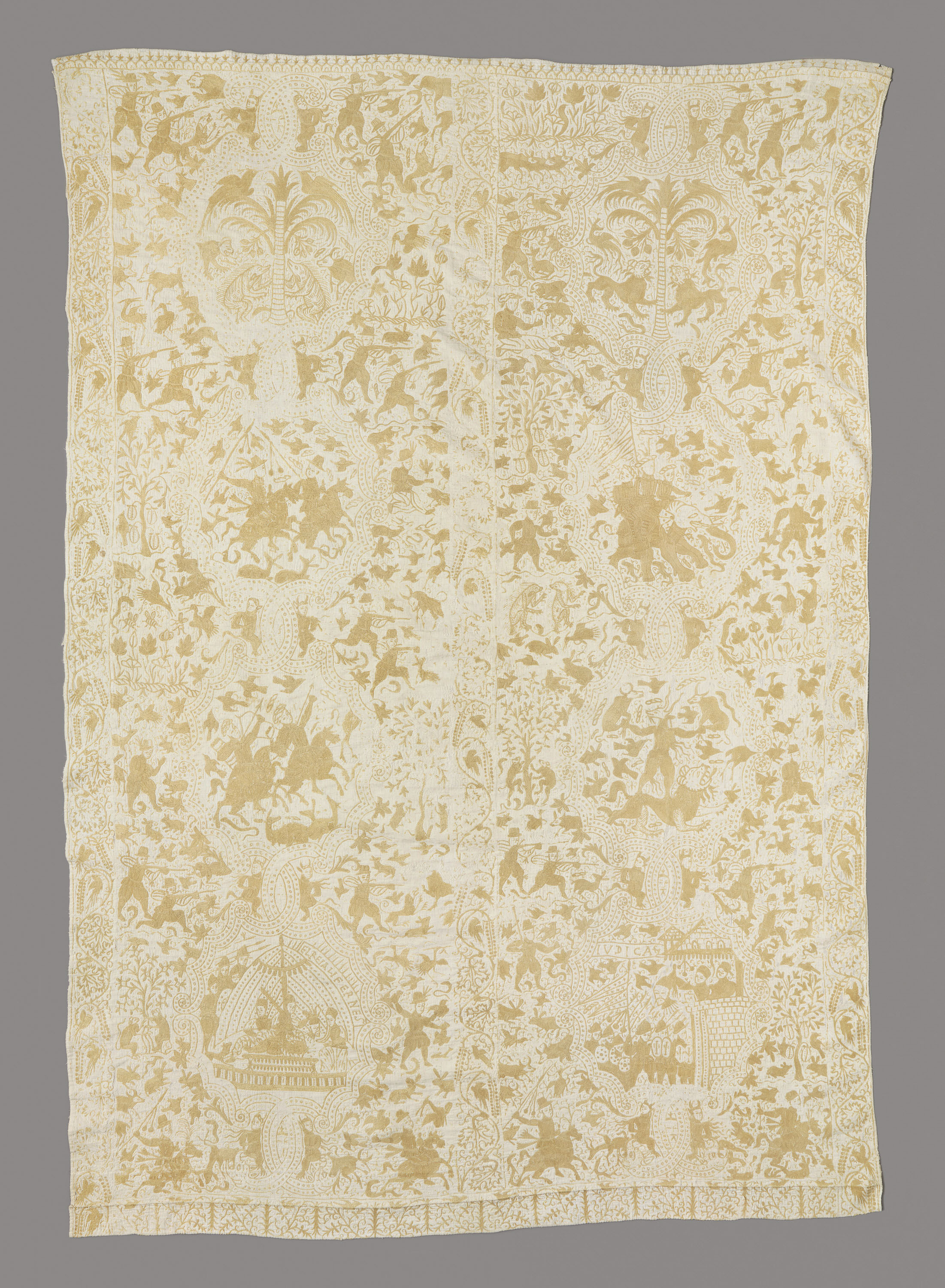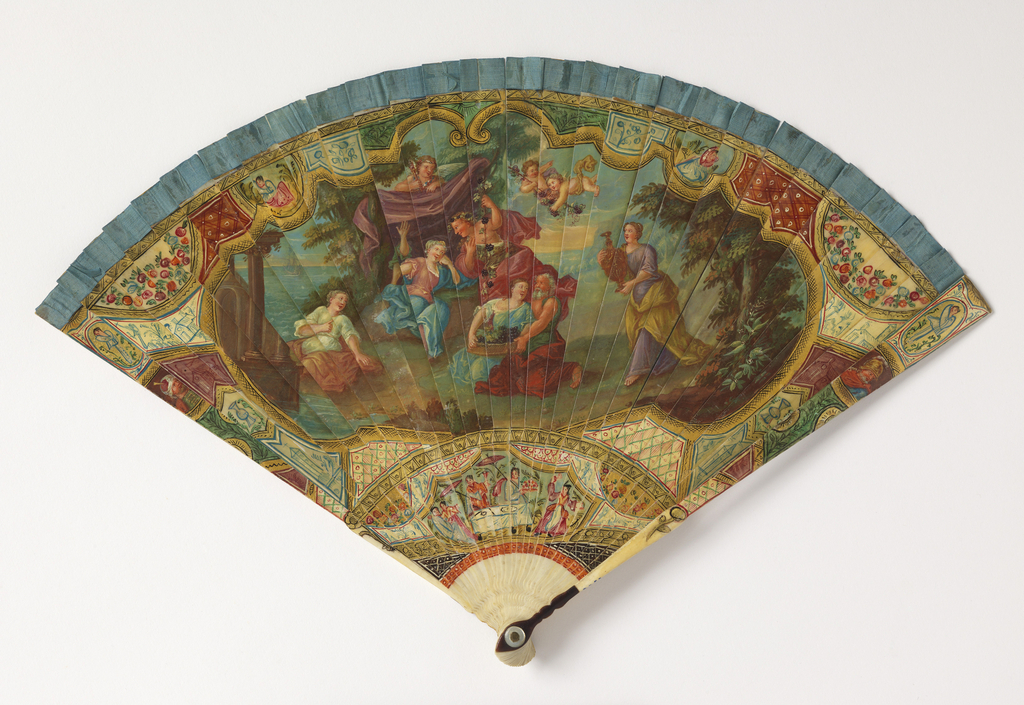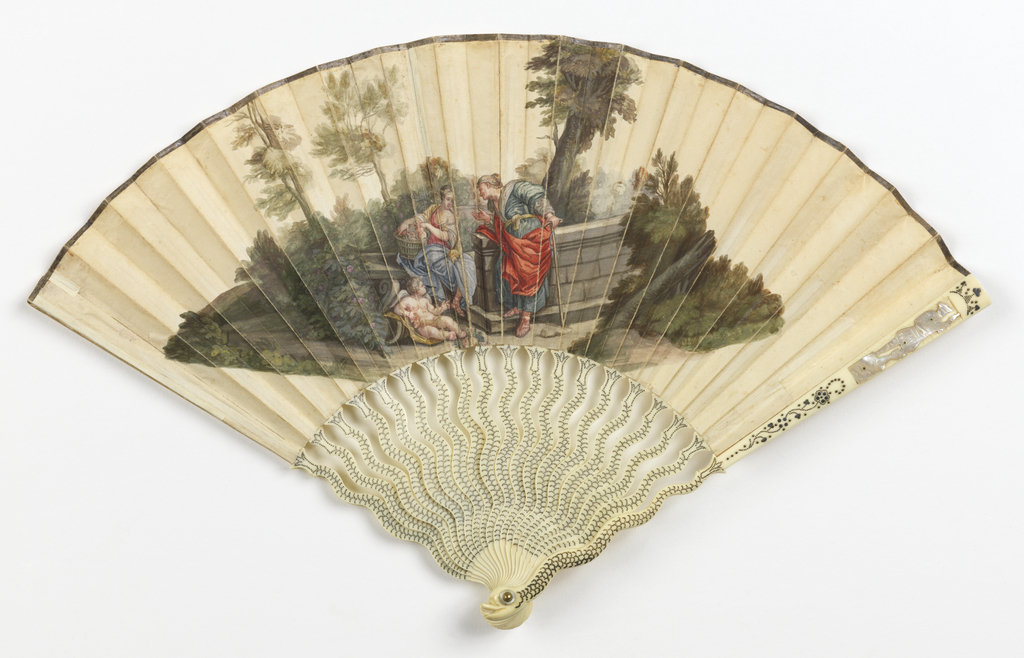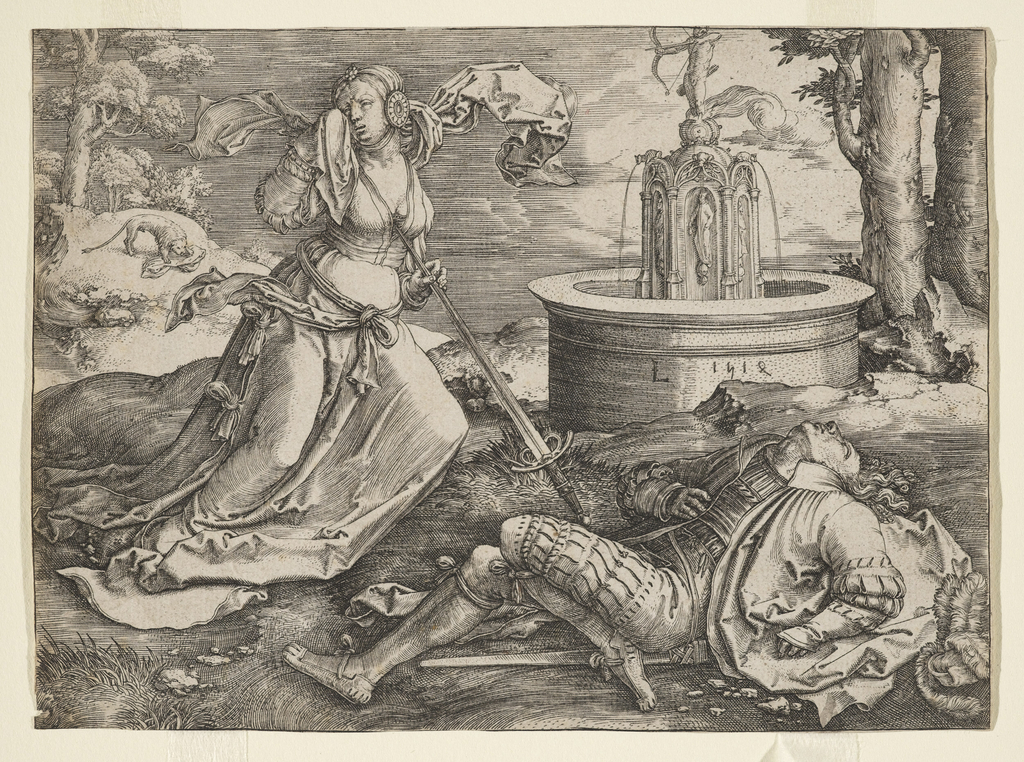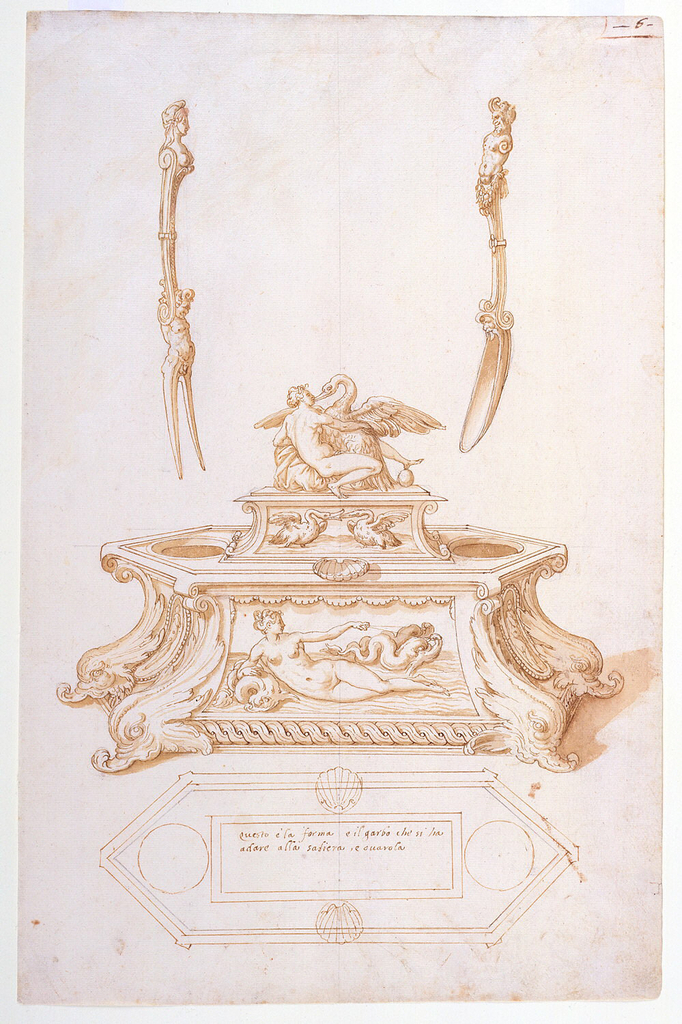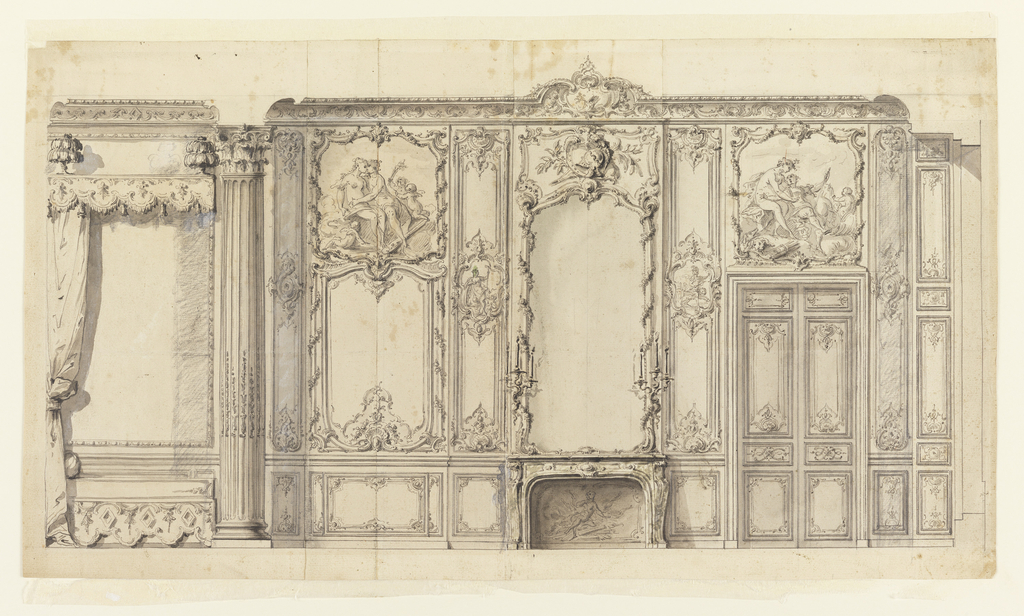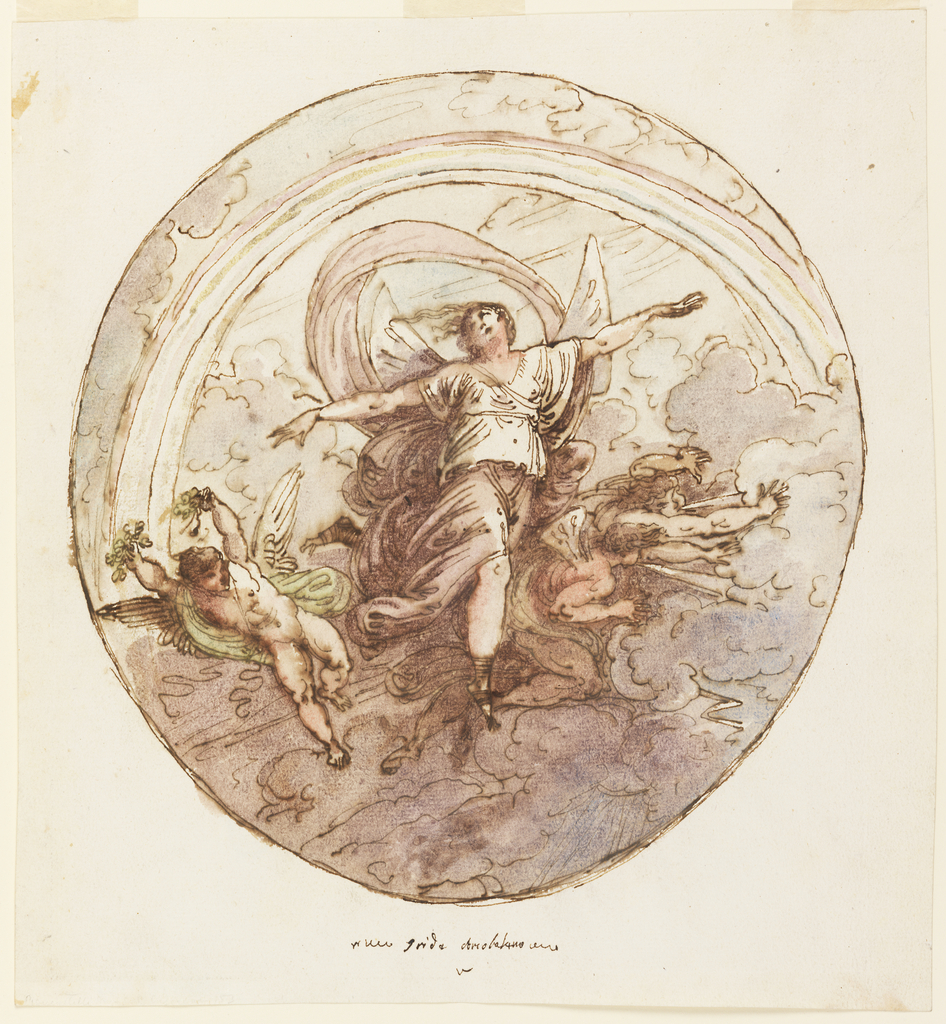Embroidered in Bengal, India for the Portuguese market, this colcha, or bedcover, is a result of the interchange of goods and cultural influence between two trade markets. The style and materials are typical of India, but the universal theme of good triumphing over evil is illustrated through a mix of local and European imagery. Eight...
This brisé fan (one consisting of rigid sticks joined with a ribbon) illustrates a story from ancient Greek mythology. Dionysus, the god of wine, finds Ariadne on the Island of Naxos. Ariadne, the daughter of King Minos of Crete, has fled away with Theseus, slayer of the Minotaur, and been deserted by him on the...
This fan depicts a scene from Roman mythology in which Vertumnus, god of orchards, seduces the nymph Pomona, steward of fruit trees, by assuming the guise of an old woman. The story is best known from Ovid’s Metamorphoses, a collection of myths centered around the recurring themes of love and transformation. Such tales were apt...
Romeo and Juliet’s story is known across the world, but what about the tale that serves as the foundation for Shakespeare’s work? Ovid’s Metamorphosis tells the tale of Pyramus and Thisbe; like Romeo and Juliet, these two were young lovers forbidden to wed because of a long-standing rivalry between their families. Their love grew through...
Poached, fried, boiled, or roasted, eggs were an important part of the Italian Renaissance diet. In the sixteenth century, Italian chefs Bartolomeo Scappi and Cristoforo da Messisbugo each published cookbooks that detailed recipes and techniques for preparing banquets, and eggs were often on the menu. One of Scappi’s reoccurring recipes was for uovo da bere, or...
The Hôtel de Soubise is a familiar sight for many researchers of French history. Located at 60 rue des Francs-Bourgeois in the 3rd Arrondissement, the building is now used as one of the main branches of the French National Archives. This drawing after the French architect Germain Boffrand (1667- 1754) shows an elevation of the...
From high up in the heavens, the Greek goddess Iris strides forward, extending her arms in both directions. The drapery of her garments, caught by a forceful wind, clings to her legs and billows behind her. Although she seems embattled by the wind, with her head titled back and her body contorted, she remains a...
